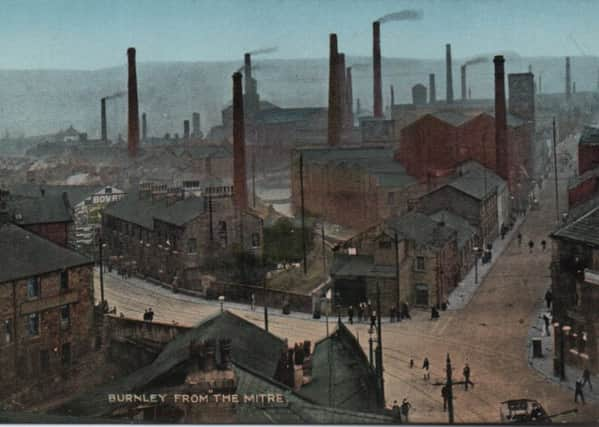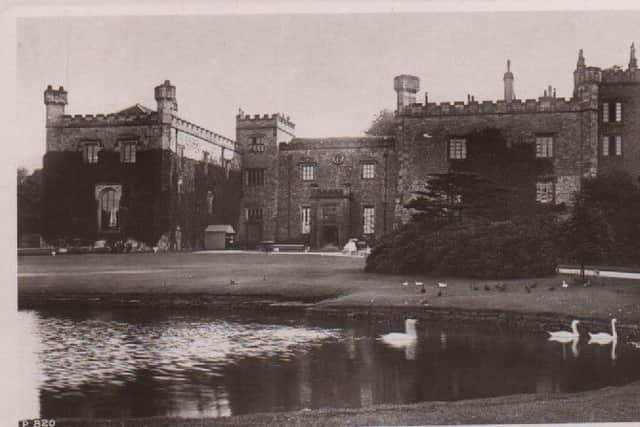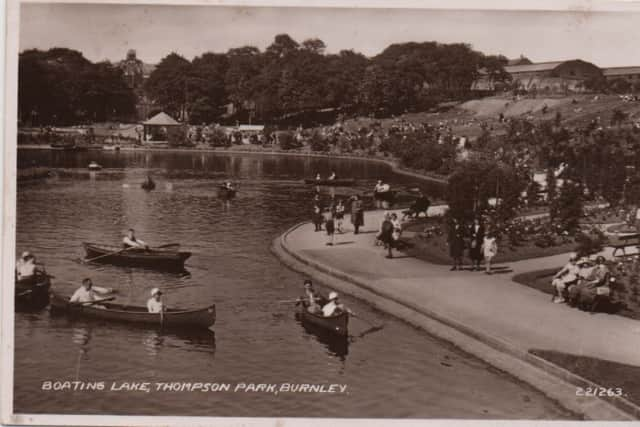Celebrating the heritage that makes us great!


It is difficult to decide what might be “headline news”. There are a number of candidates ranging from the re-opening of Gawthorpe Hall to the potential loss of Queen Street Mill Textile Museum in Briercliffe, but I am going to start with the 200th anniversary of the completion of the Leeds and Liverpool Canal.
The Burnley stretch of the canal was completed in two stages – the first, from Foulridge to Burnley in 1796, the second, from Burnley to Edenfield in 1802/3 – but the canal itself was not completed until 1816. It had taken 46 years to finish the work which started at both Leeds and Liverpool in 1770.
Advertisement
Hide AdAdvertisement
Hide AdThe project was the largest civil engineering works ever carried out in almost all of the places through which the canal passes and in Burnley we have one of the most famous – the Burnley Embankment, designated one of the “Seven Wonders of the Waterways”.


A few years ago Burnley Civic Trust persuaded the Transport Trust the Embankment deserved recognition. They agreed immediately and the result is the “red plaque” found beneath the Culvert in Yorkshire Street.
The 200th anniversary is not, however, about Burnley. It is about the whole of the canal and there will be events along the canal almost throughout the remainder of the year. I will be telling you about some as the year progresses but what happens in Burnley is in the hands of the Friends of the Weavers’ Triangle whose special interest is the canal in the area to the west of the town centre.
Since the 1970s this part of Burnley, which stretches from the Finsley Gate canal bridge to its equivalent at the Mitre, has been known as the Weavers’ Triangle. It is a name which is now internationally known and represents an almost unique mixture of industrial, commercial and domestic properties within the context of the canal. It is a landscape which should be preserved while, at the same time, enhanced by what the 21st Century has to offer.
Advertisement
Hide AdAdvertisement
Hide AdThere was a time when the area employed about 12,000 people, mainly in cotton but also in a host of other industries. The Weavers’ Triangle, long before it was known by that name, was a vital part of the Burnley, and indeed the Lancashire, economy. Its decline, in the first part of the 20th Century, was part of the disaster that happened to Burnley industry, a disaster from which the town has still not fully recovered.


The result was that the Triangle was abandoned but, happily, the authorities did not have the resources to demolish the important heritage buildings of the Weavers’ Triangle which they surely would have had things been different. Enough of the old Triangle survives, together with the new, for this area to continue to make the contribution it does to our community.
At the Weavers’ Triangle Visitor Centre, in Manchester Road, you will find a new exhibition, “Burnley’s Canal” which is open, free, to the public. The exhibition, which is partly funded by the Burnley FC in the Community Fund, tells the story of the building of the canal in the Burnley area and consists of photos, maps and artefacts many of which have not been on display before. Everyone with an interest in the history of the town should see it.
There will also be a number of other events staged by the Weavers’ Triangle. Its Towpath Walks are scheduled for May 1st and 29th (the Sundays of the forthcoming Bank Holidays) and Sunday, September 11th. Members of the public are welcome to join any of them. For first one meets, at the Visitor Centre in Manchester Road at 2-15pm.
Advertisement
Hide AdAdvertisement
Hide AdAway from the Weavers’ Triangle, but still connected with industry, recent news about Queen Street Museum has been quite good in that it has been given a stay of execution until September, but its future is not guaranteed after that date. Those of us who appreciate the importance of the museum are not surprised to learn visitors to Queen Street have increased considerably since the decision to close it was made several months ago.


Queen Street must have a future and hopefully a new organisation can be found to run the museum. This is no criticism of the excellent people who have worked at the museum since it was opened by Prince Charles, but the county council has never understood the process of running such a facility and it is likely another management (if one can be found) will do a much better job.
I am reminded of a letter recently sent to our MP about the closure of libraries and museums in Lancashire. Its author is Tony Mitchell, Chairman of the Friends of Towneley Hall. He compares the spending of £60m of public money in London, on the Garden Bridge project, when heritage facilities in the North of England are threatened with closure. Tony refers to an article, in the Guardian, which highlights the appalling hypocrisy and sheer self-interest of the establishment in the South of England and London in particular.
Queen Street is, as Tony says, a site of the highest historical interest and should have the status and funding it deserves. He adds that, in Burnley, Towneley Hall, a facility he has done much to promote, exists on a shoestring kept going by innovative management and dedicated volunteers. Hypocrisy indeed!
Advertisement
Hide AdAdvertisement
Hide AdTowneley will, of course, be open to the public, almost as usual, and I will be returning to Towneley in these pages throughout the year, but the re-opening of Gawthorpe is the main event at present. Because of illness, I have not, as yet, been to have a look at what has been achieved, but I will do so very soon.


There is lots more going on in the heritage world at the present time.
These projects include work going on with regard to the restoration of Thompson Park, Burnley. A smaller mining heritage project is in its early stages at Bank Hall Park.
The local heritage organisations in Hapton, Padiham, Cliviger and Briercliffe have all got interesting projects for 2016 and I will tell you about these very soon.
Advertisement
Hide AdAdvertisement
Hide AdI read, a number of years ago, a book warning us that Britain is gradually being turned into a Heritage Theme Park.
It was a warning this was not a good thing for the economy or the community, but, here in Burnley, we have got the balance just about right.
Our heritage is one of the things that makes us great and we are not about to forget that fact!